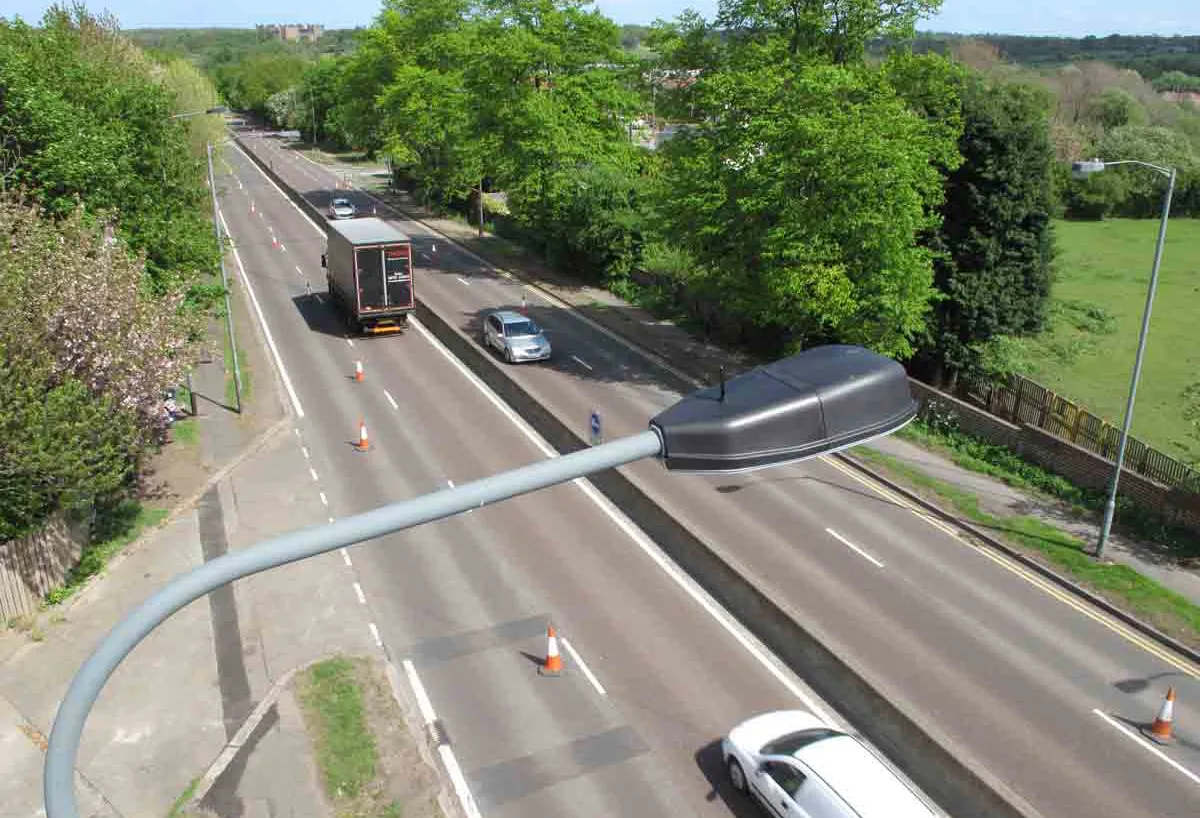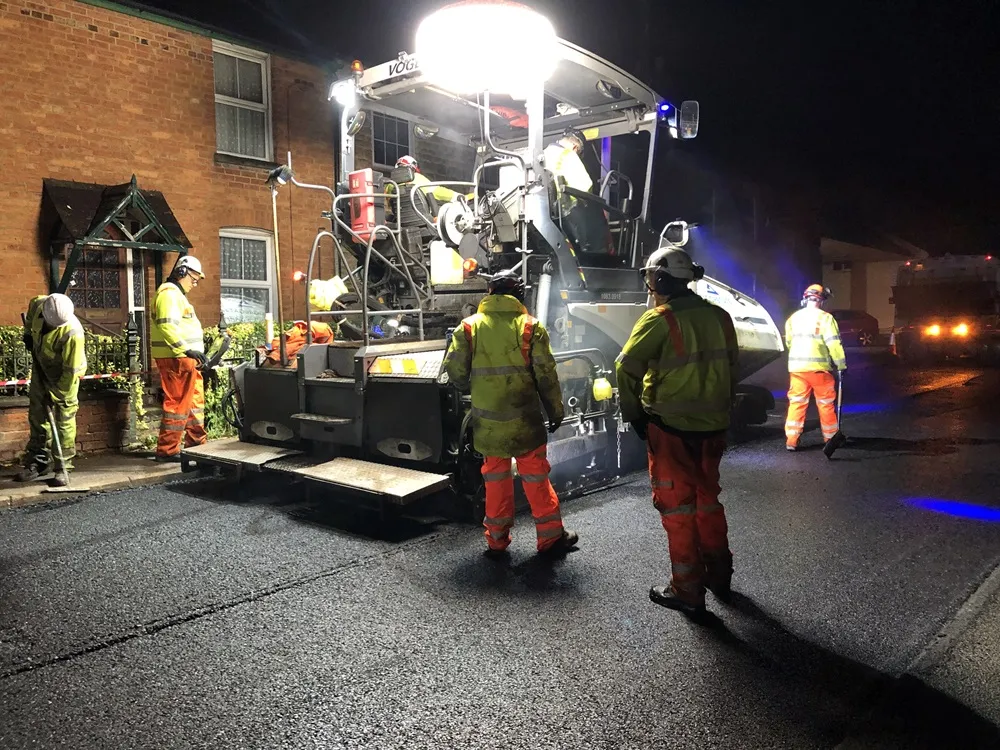Russell Fletcher* from global lighting solutions provider Harvard Technology explains how LEDs and wireless controls are changing the lighting industry. The lighting controls market is set to double by 2024, according to Navigant Research, a US-based global market research and consulting team that analyses clean technology markets. The driver is technological advancements which bring impressive results through retrofitting combined LED and wireless control systems.
October 26, 2016
Read time: 4 mins

Russell Fletcher* from global lighting solutions provider Harvard Technology explains how LEDs and wireless controls are changing the lighting industry
The lighting controls market is set to double by 2024, according to Navigant Research, a US-based global market research and consulting team that analyses clean technology markets. The driver is technological advancements which bring impressive results through retrofitting combined LED and wireless control systems.
As managers upgrade outdated fluorescent lighting to reduce energy waste and improve performance, the market will grow from US$2.2 billion in 2015 to $4.8 billion by 2024.
The light-emitting diode – LED for short – has been a huge part of this growth as advances in technology have allowed the energy efficient light source to be adopted in a wider range of applications, including commercial, industrial and domestic situations.
A key area where LEDs have captured market share, though, is outdoor and street lighting. This is especially true in combination with control systems that allow for lights to be dimmed or switched off during off-peak periods. LEDs and lighting controls have provided an energy saving solution for local authorities and central government departments tasked with reducing overall budget costs on top of increasingly onerous carbon reduction targets.
New-generation LED technology brings several advantages over traditional systems; they provide the required surface illuminance using less energy and with improved uniformity. LED luminaires also have significantly longer life and are easier to maintain, as well as being more energy efficient - they contain no mercury or lead and switch on instantly without run-up time.
The UK’s Green Investment Bank is fully on board with the LED use. It was set up in 2012 by the government to attract private funds for financing the private sector's investments in environmentally friendly technologies. The bank says LEDs have emerged as the favoured energy saving street lighting technology due to the savings they can make of up to 80%, and long-life maintenance savings. Switching to efficient LED street lighting would save almost $264 million a year in the UK. Importantly, it is estimated that the investment would be paid off in less than 10 years.
The inefficiency of many of the street lights currently installed is a staggering 30% of light emitted as it is dispersed upwards. Controls allowing for zoning, directional and space lighting, with the trend to use a variety of light sources at a single location, enhance the appeal of combining them with LEDs. This also increases energy and cost savings.
Harvard Technology is behind the innovative LeafNut system which is already installed at more than 100 locations across more than 400,000 light points worldwide. LeafNut provides a robust wireless control, monitoring, management and reporting system for outdoor and street lighting. It remotely monitors and controls the output of each individual light, as well as groups of luminaires, through the use of GPRS and radio frequency. Any faults in a lantern are reported directly to the user by e-mail every day.
The advantages of LED lighting and LeafNut are being enjoyed by many including the UK’s Durham County Council. The local government’s engineers sought a system to bring substantial cost savings and a reduction in carbon emissions. This is on the agenda of every organisation with the Climate Change Act setting targets to reduce carbon emissions by 80% by 2050, based on 1990 levels.
The council’s engineers wanted to dim lights on main roads during low traffic volumes and by using LeafNut did so by 30% without compromising driver safety. They also have the ability to bring lights back to full power at the “touch of a button”, which is an important safety aspect.
The upgrade has enabled the council to achieve savings of 100kg carbon emissions per street light per year. This gives the potential to reduce its carbon emissions by over eight million tonnes and save nearly $5.3 million in energy costs annually. The solution has also put the council on track to comply with its Carbon Reduction Commitment by reducing the amount of energy the street lights use.
* Russell Fletcher is European sales and marketing director at Harvard Technology, a global design, development and manufacturer of energy saving lighting solutions.
The lighting controls market is set to double by 2024, according to Navigant Research, a US-based global market research and consulting team that analyses clean technology markets. The driver is technological advancements which bring impressive results through retrofitting combined LED and wireless control systems.
As managers upgrade outdated fluorescent lighting to reduce energy waste and improve performance, the market will grow from US$2.2 billion in 2015 to $4.8 billion by 2024.
The light-emitting diode – LED for short – has been a huge part of this growth as advances in technology have allowed the energy efficient light source to be adopted in a wider range of applications, including commercial, industrial and domestic situations.
A key area where LEDs have captured market share, though, is outdoor and street lighting. This is especially true in combination with control systems that allow for lights to be dimmed or switched off during off-peak periods. LEDs and lighting controls have provided an energy saving solution for local authorities and central government departments tasked with reducing overall budget costs on top of increasingly onerous carbon reduction targets.
New-generation LED technology brings several advantages over traditional systems; they provide the required surface illuminance using less energy and with improved uniformity. LED luminaires also have significantly longer life and are easier to maintain, as well as being more energy efficient - they contain no mercury or lead and switch on instantly without run-up time.
The UK’s Green Investment Bank is fully on board with the LED use. It was set up in 2012 by the government to attract private funds for financing the private sector's investments in environmentally friendly technologies. The bank says LEDs have emerged as the favoured energy saving street lighting technology due to the savings they can make of up to 80%, and long-life maintenance savings. Switching to efficient LED street lighting would save almost $264 million a year in the UK. Importantly, it is estimated that the investment would be paid off in less than 10 years.
The inefficiency of many of the street lights currently installed is a staggering 30% of light emitted as it is dispersed upwards. Controls allowing for zoning, directional and space lighting, with the trend to use a variety of light sources at a single location, enhance the appeal of combining them with LEDs. This also increases energy and cost savings.
Harvard Technology is behind the innovative LeafNut system which is already installed at more than 100 locations across more than 400,000 light points worldwide. LeafNut provides a robust wireless control, monitoring, management and reporting system for outdoor and street lighting. It remotely monitors and controls the output of each individual light, as well as groups of luminaires, through the use of GPRS and radio frequency. Any faults in a lantern are reported directly to the user by e-mail every day.
The advantages of LED lighting and LeafNut are being enjoyed by many including the UK’s Durham County Council. The local government’s engineers sought a system to bring substantial cost savings and a reduction in carbon emissions. This is on the agenda of every organisation with the Climate Change Act setting targets to reduce carbon emissions by 80% by 2050, based on 1990 levels.
The council’s engineers wanted to dim lights on main roads during low traffic volumes and by using LeafNut did so by 30% without compromising driver safety. They also have the ability to bring lights back to full power at the “touch of a button”, which is an important safety aspect.
The upgrade has enabled the council to achieve savings of 100kg carbon emissions per street light per year. This gives the potential to reduce its carbon emissions by over eight million tonnes and save nearly $5.3 million in energy costs annually. The solution has also put the council on track to comply with its Carbon Reduction Commitment by reducing the amount of energy the street lights use.
* Russell Fletcher is European sales and marketing director at Harvard Technology, a global design, development and manufacturer of energy saving lighting solutions.









